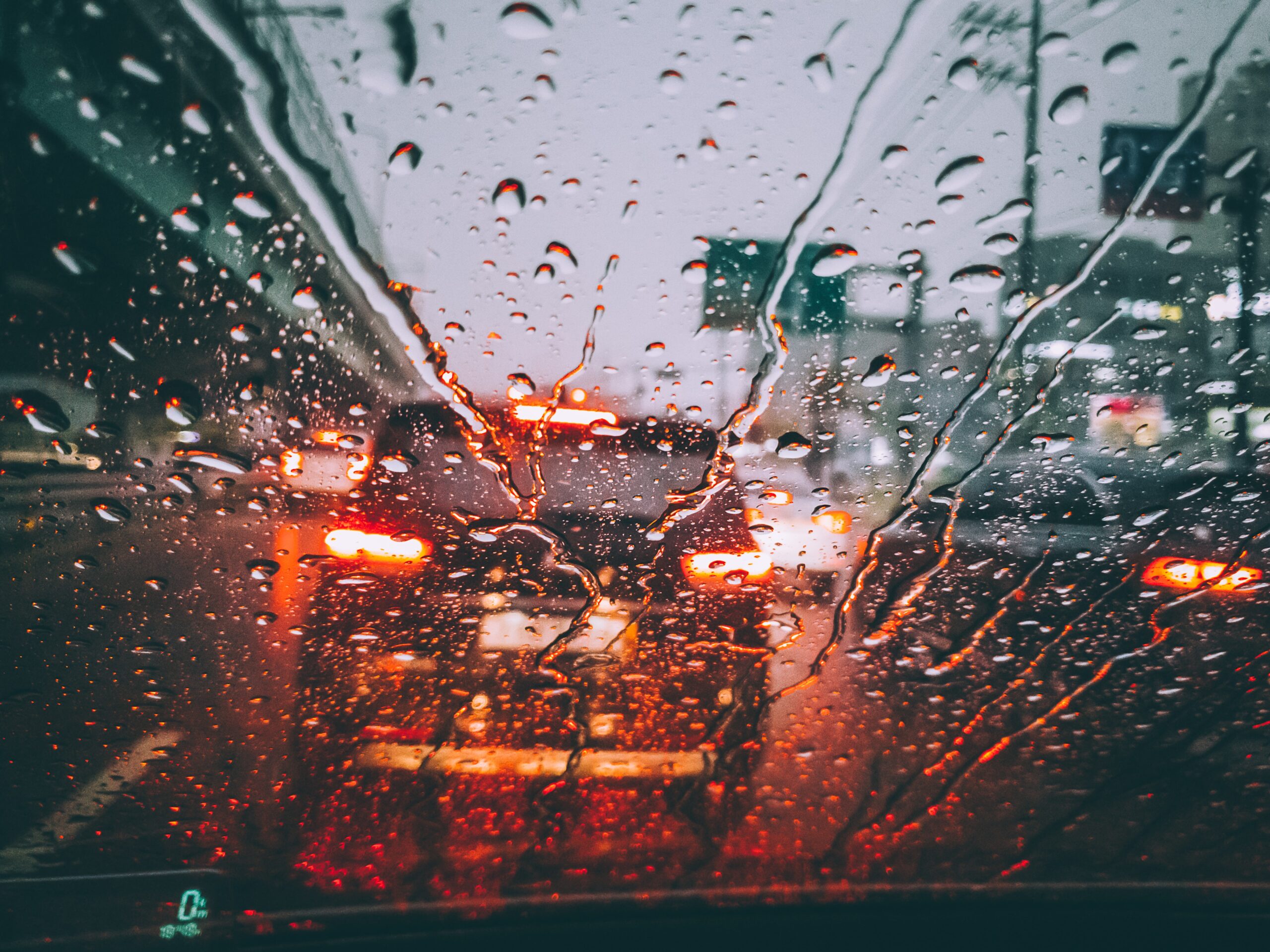
Driving in the rain can be dangerous, but it doesn't have to be. By following a few simple safety tips, you can help reduce your risk of being involved in a car accident.
Safety tips for driving in the rain is not the same when driving on dry road. It’s that time of the year again when we experience rainfalls almost every other day. So, the chances of having a daily experience driving in the rain are very high. Despite the rain and wet roads, people still have to make the commute to the office, church, school or market.
Whether it’s a slight drizzle or a heavy downpour, driving in the rain or wet roads can be a challenging and perilous endeavour. This is often because of such things as hydroplaning, skids and slick roads. It’s even more hazardous in a place like Nigeria, especially as most of the roads are laden with potholes which get subsumed by water during the rainy season.
Safe driving in the rain is perhaps one of the challenges that many drivers face on a regular basis during the season. There are a lot of elevated risks whenever there’s rainfall or when the roads are still wet from a previous downpour, making it a necessity to adhere to the safety tips for driving in the rain.
Although it can be tough to keep control of your vehicle when roads are wet and behind a rain-splattered windshield, it is very necessary for your safety that you do not panic or get agitated in the process. Feelings like these do more harm than good. As a driver, you should be sensitive to varying weather conditions.
When confronted with unfriendly weather, it is wise to either cancel or reschedule the trip. However, you can’t cancel going to work or school because of rainfall, but you can master the safety tips for driving in the rain. So, in this article, we outline safety tips you can apply when driving in the rain.
First and foremost, when driving in the rain, it is important that you take a moment to critically assess the severity of the situation. If the road is completely flooded such that you cannot decipher between the main road and the drainage, kindly park the vehicle until the road situation becomes more evident. Below are safety tips for driving in the rain:

Your vehicle headlights are not meant to be used at night time driving only. When driving in the rain, you must keep your headlights on at all times –both daytime and nighttime. This is a very underrated and forgotten precaution.
Keeping headlights on is a necessary safety measure when it’s raining or misty. It will enhance your visibility on the road and help other drivers see your car as well. However, you do not need to turn on the brightest headlamp. Brighter light will only reflect off the wet surfaces, bounce back into your eyes and irritate other drivers.
Most motorists drive too fast on wet roads, enjoying the water splashing all around them. While this may seem cool, speeding in the rain is actually life-threatening. When it’s raining, you have to slow down on the road for your own good. When it rains, the road gets slippery and slick.
Fresh rain also brings out the oils and grease film produced by cars on roadways, making it even slicker. Reducing speed maximizes safety. If you are driving too fast, your vehicle is at risk of hydroplaning. Thus, the safest option is to go significantly slower than normal. Wet roads are risky and as such, the time it will take for your vehicle to react at all will be slow.
Unless you are already on the road when it starts to rain, it’s not a bad idea to forfeit a road trip. But if the trip is important, assess the severity of the weather and ask yourself if you are prepared to handle it at the moment. In heavy rain conditions and cases of flooding, it is most often safer to stay put and wait it out before you hit the road.
Hydroplaning is one of the leading causes of car accidents in the rain and on wet roads. Hydroplaning occurs when there is a build-up of water between the road surface and the car tyres. When this film of water gets caught between the road and the tyres, it causes the car to skid, making it even harder to slow down or come to a halt.
Driving at a speed faster than normal, say, 35 miles/per hour or perhaps faster into a puddle (stagnant water) puddles causes hydroplaning. Note that there’s an increased risk of hydroplaning if your tyres are wearing out. Therefore, always check the tread depth of your tyres regularly.
An effective measure against hydroplaning is to slow down when it starts to rain. But if your car starts to hydroplane, don’t panic just slow down some more. You achieve this by easing the pressure on the gas pedal or taking your foot off it completely for the vehicle to slow down. The next step is to slowly steer in the same direction you are hydroplaning until you can control it.
This may sound absurd or even contradictory, but doing exactly that will actually help realign your tyres with your vehicle so that they both move in the same direction. Remember, your steering has to be slow. Try not to jerk the wheel or flip your car. Find a balance.
Avoid puddles and flooded areas at all costs, especially if you are unfamiliar with the road. It is highly unsafe. If you drive into a flood too deep, your car could float as it takes on water and worse, it might even get washed away with you in it. Make it a point to gauge the depth and be very familiar with the roads you’re on.
If you’re not so certain about just how deep the water might be, lay off the road or simply find another way. Don’t get too excited by the big splash created when driving through a huge puddle or flood. It’ll cost you. Water could very easily enter the engine compartment of the car and damage internal systems. Find a middle lane if you can and drive in it.
Make sure you have enough space when driving in the rainy, misty and wet weather conditions. It is important that you leave more room between yourself and the car in front. You can do this by increasing your following distance to five seconds (or more) behind any vehicle ahead of you. This will make it nearly impossible for you to hit anything at all.
You might be driving on a highway with several lanes on a rainy day. Thus, ensure to keep an open space on one side of your vehicle at least at all times. By doing this, even if you do not have enough time to hit the brakes, you would be able to immediately swerve right or left if the need arises.
With rain comes humidity, and humidity causes fogging. Fogging is one of the worst things to encounter when driving in the rain. Cars tend to fog up because the temperature outside does not match the temperature inside the vehicle. To prevent your windows from getting fogged up when it rains, turn on the air conditioner and set the temperature to match the one outside.
This will stop the glass windshield from getting all fogged up and enhance visibility. But if that doesn’t work out, pull your car over and open a window or two to ventilate the vehicle. You could choose to use a towel or a cloth to wipe the windshield whenever it gets fogged up but this solution is far from permanent.
Telemedicine provides real-time consultations with medical professionals, even from a remote location. Safety tips for driving in the rain cover the needful acts to which you should adhere; however, telemedicine brings healthcare professionals closer to you while you are on the road. Through digital cameras, internet telecommunications, cell phones, tablets, and other technology, you can connect with any healthcare specialist.
Telemedicine has made it so easy that, when consulting with a doctor virtually, you can obtain prompt assistance for any medical issue you may be experiencing. You can access healthcare professionals through telemedicine services like Kompletecare from any location on the globe.
Nobody goes on a journey with the hope of experiencing unfortunate events on the road, but one can keep into account safety tips for driving in the rain. In the event of accidents, you can get timely care with telemedicine, which uses internet services to address healthcare needs.
1.How do you control a car in the rain?
Safety tips for driving in the rain? How to keep your car under control and prevent hydroplaning
2. What is the safest lane to drive in the rain?
You will always want to find a safe lane to drive in the rain, and here is what to do:
The above safety tips for driving in the rain should be applied appropriately, if need be.
3. What should you turn on if driving in the rain?
One of the safety tips for driving in the rain is to put on the headlights. Always turn on your headlights, whether it’s cloudy or raining outside. Just turn on your regular headlights. Avoid using your high beams when it’s raining, as the bright lights can cause you and other drivers to get blinded. Nor will your fog lights be of any assistance.
Putting on your headlight as one of the safety tips for driving in the rain makes it easier for other road users to see you as you drive along, and it prevents any form of unplanned collision.
4. What are the hazards of the rain?
There are several hazards that emanate as a result of heavy rains, such as flooding, which poses a risk to human life, damage to buildings and infrastructure, and the loss of agricultural products and livestock.
Landslides have the potential to endanger lives, obstruct communications and transportation, and harm infrastructure and property. With the potential hazards that may arise as a result of rain, endeavour to adhere to the safety tips for driving in the rain to minimise any hazards that may arise.
5. What steps should a driver take if they begin to hydroplane?
Safety tips for driving in the rain and if your vehicle happens to hydroplanes.
6. How does the rain affect driving?
You are affected in many ways when you are driving in the rain. Here is how:
7. Why should you avoid heavy braking on a wet road?
One of the safety tips for driving in the rain is to avoid heavy braking on a wet road. The brakes of an automobile do not operate as quickly on wet roads as they may on dry ones.
Avoiding harsh braking is crucial for safe driving on wet roads since it lowers the possibility of the vehicle spinning out of control.
8. How do you drive in the rain without traction control?
Go slowly: one of the best safety tips for driving in the rain is to slow down. One of the biggest mistakes people make in the rain is driving too quickly.
Give yourself plenty of time to brake because it takes longer to stop or slow down on wet roads. Additionally, you ought to give yourself some extra distance from the vehicle in front of you.
9. How do I stop my car from skidding?
Tips for preventing skids
Cal OES News. Strom season safety: Driving during a storm.
Huffman & Huffman. (2021). What to do if your car starts to hydroplane.
Nationwide. (2023). How to help prevent vehicle skids.
Omega Law Group. (2022). Safety tips for driving in the rain.
OTIP RAEO. (2023). Driving in the rain? How to avoid hydroplaning and control your vehicle.
healthcareNovember 7, 2024
MedicationNovember 25, 2024
NutritionFebruary 5, 2025
MedicationFebruary 5, 2025








